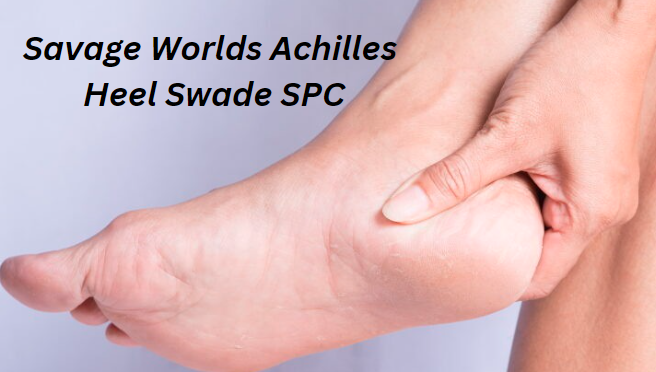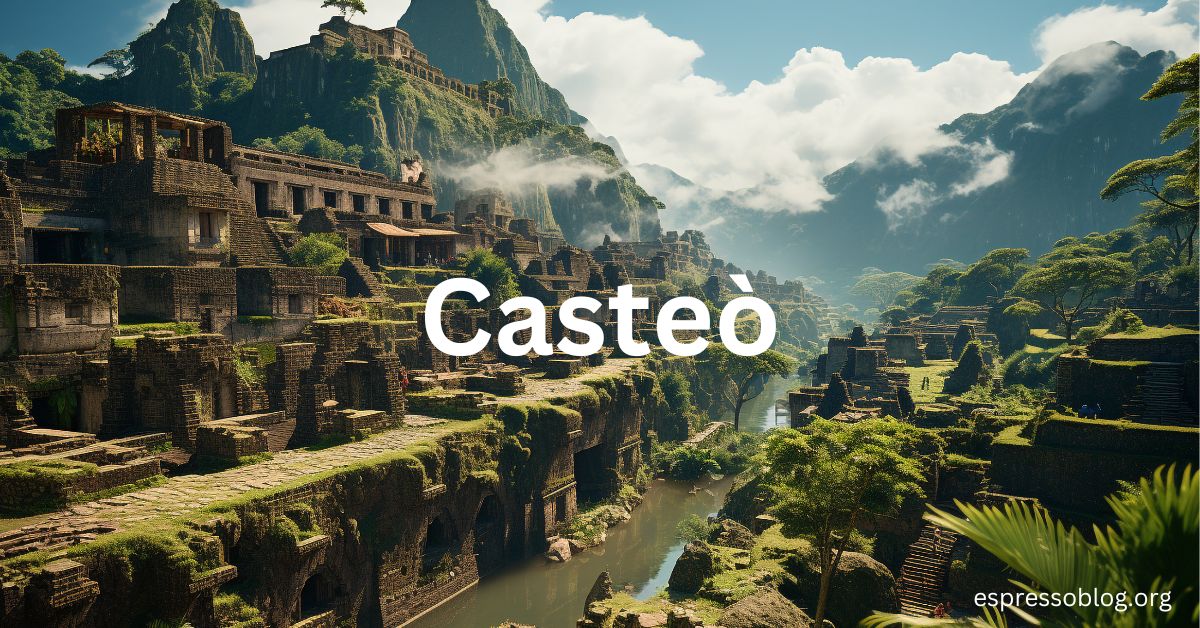In the ever-expanding universe of tabletop role-playing games (TTRPGs), the Savage Worlds system has made a name for itself with its fast, fun, and furious approach to gameplay. One of the most interesting additions in Savage Worlds Adventure Edition (SWADE) is the concept of “Achilles Heel” from the Savage Worlds Super Powers Companion (SPC). This rule introduces vulnerabilities or weaknesses that create new layers of strategy, challenge, and excitement for players and Game Masters (GMs) alike.
In this article, we will dive deep into the mechanics, strategy, and creative opportunities presented by Savage Worlds Achilles Heel SWADE SPC. By the end, you’ll understand how to incorporate these vulnerabilities into your games for thrilling and balanced encounters, as well as how to optimize your characters with this dynamic element in mind. This guide is intended for both new players and veterans of Savage Worlds who want to explore the full potential of the Achilles Heel mechanic.
What is Savage Worlds Achilles Heel SWADE SPC?
At its core, the Achilles Heel rule in Savage Worlds Super Powers Companion (SPC) is a feature that introduces a character’s specific weakness. Just as the legendary Achilles was invincible except for his heel, characters with this feature have a glaring vulnerability that enemies can exploit. This adds layers of complexity to gameplay, requiring players to be more mindful of their character’s limits.
The Achilles Heel mechanic can be seen as a balancing factor for highly powered characters. By giving them a significant weakness, it ensures that even the most powerful heroes have something to fear, and that GMs have a tool to keep encounters challenging and interesting.
How Does Achilles Heel Work in Savage Worlds SPC?
In SWADE SPC, Achilles Heel functions as a flaw or hindrance that can be taken by characters, usually in exchange for some form of advantage. When a character’s Achilles Heel is triggered, they become vulnerable to specific types of attacks, conditions, or situations. This could range from a weakness to a certain type of energy, such as fire or electricity, to an inability to resist certain types of mental manipulation.
Key Mechanics of Achilles Heel:
- Specific Trigger: The Achilles Heel must have a clearly defined trigger, such as a certain damage type (e.g., “vulnerable to cold-based attacks”) or a situational weakness (e.g., “cannot resist mind control during the full moon”).
- Increased Damage: When the Achilles Heel is triggered, the character typically takes extra damage or suffers penalties to resist certain effects.
- Balancing Power: The Achilles Heel mechanic ensures that super-powered or highly skilled characters remain balanced in the game, encouraging strategic planning and teamwork.
Why Use Achilles Heel in Your Game?
The Achilles Heel mechanic is not just a way to nerf characters, but rather a tool to enhance storytelling and gameplay dynamics. By giving characters a specific weakness, GMs and players can engage in richer narrative experiences, creating tension, drama, and memorable moments. Additionally, it encourages players to think creatively about how to protect their character or mitigate the impact of their vulnerability.
Strategic Impact of Achilles Heel in Savage Worlds SWADE SPC
Introducing an Achilles Heel into your campaign can have profound effects on the strategic elements of gameplay. Players will need to carefully consider their actions and alliances, knowing that their character’s weakness could be exploited at any time. GMs, on the other hand, must find ways to challenge players without making the Achilles Heel feel like an unfair punishment.
1. Enhanced Tactical Depth
Characters with an Achilles Heel must operate with a heightened sense of caution. If your character is weak to fire-based attacks, every encounter with a fire-wielding enemy becomes a high-stakes challenge. This vulnerability forces players to employ more strategic thinking, emphasizing teamwork, defensive planning, and resource management.
For instance, a character who is vulnerable to fire might need to invest in protective gear or rely on party members to shield them from flames during combat. This vulnerability may also encourage creative solutions—perhaps the character develops an item or ability that mitigates their weakness temporarily.
2. Storytelling Opportunities
An Achilles Heel isn’t just a mechanical feature—it’s a storytelling tool. GMs can weave the character’s weakness into the narrative in interesting ways. Maybe the villain discovers the character’s Achilles Heel and creates a devious trap. Or, perhaps the Achilles Heel ties into the character’s backstory, offering opportunities for character development and redemption.
For example, a character who has a weakness to cold-based attacks might have gained their powers in an experiment involving extreme heat, but the process left them vulnerable to cold temperatures. This can spark personal quests or drive them toward new challenges that explore the origins of their powers and vulnerabilities.
3. Balanced Power
One of the key challenges in running games with super-powered characters is ensuring that they remain balanced within the context of the game world. Achilles Heel serves as a perfect counterbalance to powerful abilities.
A character with extreme strength or mental powers can become too dominant without a counterweight. Achilles Heel ensures that such characters still face significant risks, adding tension and uncertainty to their actions.
Implementing Achilles Heel in Savage Worlds Campaigns
To successfully incorporate Achilles Heel into your Savage Worlds campaign, both players and GMs need to consider several factors.
For Players:
- Choose an Achilles Heel that Makes Sense: Your Achilles Heel should fit your character’s concept and story. It could be tied to your origin story or a consequence of your powers. A poorly chosen Achilles Heel can feel arbitrary and may not add much to the game.
- Plan Around Your Weakness: Once you’ve identified your Achilles Heel, think about how you can plan around it. Are there abilities or items you can acquire to mitigate your vulnerability? Can you rely on your teammates to help cover for your weakness?
- Use Your Achilles Heel for Roleplay: Don’t shy away from using your Achilles Heel as a way to enrich your roleplay experience. Explore how your character feels about their weakness, and how it affects their relationships with others. This can add depth to your interactions and make your character feel more three-dimensional.
For GMs:
- Introduce the Achilles Heel Fairly: When incorporating a player’s Achilles Heel into the game, make sure it doesn’t feel like a constant punishment. Use it to add tension and drama, but don’t overuse it to the point where the player feels like their character is always at a disadvantage.
- Use Achilles Heel to Drive the Story Forward: The Achilles Heel can serve as a plot device that drives the narrative. Perhaps an enemy discovers the character’s weakness, or a situation arises where the Achilles Heel becomes critical to the outcome of the mission.
- Balance Challenges: GMs need to balance challenges that exploit the Achilles Heel with opportunities for players to overcome or mitigate their vulnerability. Don’t make every encounter about the Achilles Heel—use it sparingly for maximum impact.
Examples of Achilles Heel in Savage Worlds SPC
To better understand how the Achilles Heel works in practice, let’s explore a few examples:
1. Super Strength with a Weakness to Electricity
Imagine a character who possesses super strength, able to lift cars and smash through walls. However, they have an Achilles Heel: they are extremely vulnerable to electricity. Whenever they are hit with an electrical attack, they take double damage and are stunned for one round.
In this scenario, the player needs to be cautious around enemies that use electricity. They might have to avoid getting too close to certain foes or rely on their teammates to take on electrical threats. This also gives the GM a tool to create high-tension moments when electrical hazards are present.
2. Psychic Abilities with a Weakness to Mind Control
Another character may have incredible psychic abilities, able to read minds, control thoughts, and project their consciousness. However, their Achilles Heel is a susceptibility to mind control themselves. When facing enemies with mind control powers, they have a reduced resistance and are more easily dominated.
This makes encounters with psychic enemies particularly dangerous. The player must think creatively to avoid mind control, perhaps by using protective gear or staying out of range of mental attacks.
3. Invisibility with a Weakness to Sound
A character with invisibility powers can become nearly undetectable, slipping past enemies and setting up ambushes. However, their Achilles Heel is sound—loud noises disrupt their invisibility, making them vulnerable to detection.
This creates interesting gameplay dynamics where the character must be careful about making noise or being in environments where sound is a factor. GMs can introduce noisy enemies or environmental hazards that exploit this vulnerability.
FAQs about Savage Worlds Achilles Heel SWADE SPC
Q1: What is the purpose of Achilles Heel in Savage Worlds? Achilles Heel is designed to balance powerful characters by introducing a significant vulnerability. It adds strategic depth and creates opportunities for interesting storytelling and gameplay dynamics.
Q2: Can Achilles Heel be removed or mitigated in the game? Yes, depending on the GM and the narrative, characters may be able to mitigate or overcome their Achilles Heel through in-game actions, such as acquiring new abilities, gear, or completing personal quests.
Q3: Is Achilles Heel mandatory for all characters in Savage Worlds SPC? No, Achilles Heel is an optional mechanic that can be used to balance particularly powerful characters. It is not mandatory but is recommended for characters with high levels of power.
Q4: How should GMs incorporate Achilles Heel into encounters? GMs should use Achilles Heel sparingly to create tension and drama, rather than as a constant handicap. It should be used to enhance storytelling and challenge players without making the game feel unfair.
Conclusion: Mastering Savage Worlds Achilles Heel SWADE SPC
The Savage Worlds Achilles Heel SWADE SPC mechanic adds a layer of depth and excitement to any Savage Worlds campaign. Whether you’re a player crafting a unique and challenging character or a GM looking to create balanced and engaging encounters, the Achilles Heel mechanic offers countless opportunities for creative gameplay. By understanding the strategic implications and storytelling potential, you can make the most out of this powerful tool in your TTRPG adventures.
With its ability to balance power, create tension, and enhance roleplay, Achilles Heel is more than just a weakness—it’s a key to unlocking the full potential of Savage Worlds gameplay.



